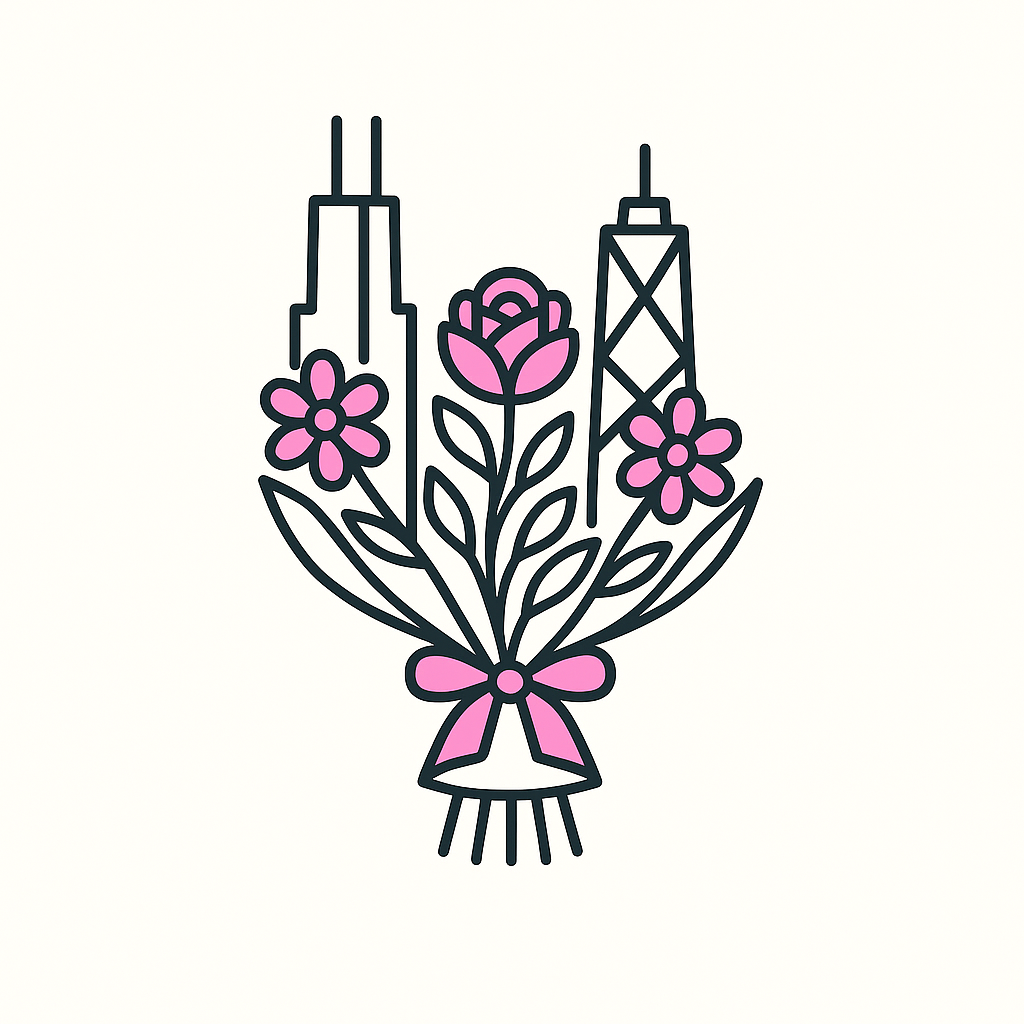Winnetka, IL Florist | Same Day Flower Delivery 60043, 60093

Bloom Floral delivers anywhere in the city, including Winnetka, IL 60093
We offer same day Winnetka, IL 60093 flower delivery in Winnetka, IL 60093 in the North Shore
All of our floral designs in our collection are available for delivery in Winnetka, IL. As a florist in Winnetka, IL 60093, we will deliver beautiful, modern designs to your loved ones. Our floral designs will make sure to impress.
WInnetka IL 60093 is in Cook County, 16 miles N of the Loop. In 1836, Erastus and Zeruah Patterson established the Patterson Tavern along the Green Bay Trail, which connected Chicago to Fort Howard in Green Bay, Wisconsin. Eighteen years later Charles E. Peck and Walter S. Gurnee, president of the newly formed Chicago & Milwaukee Railroad, platted three hundred acres in New Trier Township along the western shores of Lake Michigan. The town was named Winnetka 60093 , a Native American word thought to mean “beautiful place.” That year, the Chicago & Milwaukee began servicing Winnetka, IL 60093 and other shoreline communities north of the city. In 1869, Winnetka was incorporated as a village, and Charles Peck donated land now known as the Village Green east of Winnetka's main business district.
The village of Winnetka, IL 60093 began making municipal improvements in the 1870s. A 119-foot-tall brick water tower constructed near the lake served as a local landmark until 1972. In 1900, the Municipal Electric Utility Plant began operating. Profits from this village owned utility funded the complete construction of Winnetka's 60093 village hall and also helped pay the salaries of local teachers during the Great Depression.
In 1890, social activist and Winnetka resident Henry Demarest Lloyd helped found the Winnetka 60093 Town Meeting, providing a forum for residents to hear such speakers as Jane Addams and Clarence Darrow. In 1915, the village formed the Winnetka 60093 Caucus to maintain citizen control over Winnetka's future. Winnetka continues to operate under this system.
The arrival in 1899 of the Chicago & Milwaukee Electric Railroad (later the Chicago, North Shore & Milwaukee) provided an additional link between suburb and city. Chicagoans looking to escape the crowded city were attracted to Winnetka's lakefront location and commuter services. Between 1880 and 1920 Winnetka's population grew ten-fold. Intent on maintaining its suburban repose, Winnetka elected to become dry in 1912. In 1917, the village council appointed a commission to formulate a comprehensive plan for village development. In 1921, the commission published the Winnetka, IL Plan, which emphasized the goal of maintaining Winnetka's quiet character.
The plan also stressed the need for grade separation of the railroad tracks. By 1937, 31 people had been killed at railroad crossings in Winnetka. Concerned that elevating the tracks would divide the community, Winnetka opted to have them lowered instead. Between 1938 and 1943, workers under the Public Works Administration excavated the roadbed and lowered the North Western and North Shore lines' rights-of-way.
Hailing from Winnetka, IL, 60093 Secretary of the Interior Harold Ickes proposed draining the adjacent Skokie wetlands as a New Deal project. Civilian Conservation Corps workers spent 10 years on the massive land-reclamation project that created the Skokie lagoons.
In 1955, the North Shore Winnetka, IL 60093 interurban line abandoned its passenger service to the communities along the lakeshore. Since the 1960s, Winnetka's population has remained below 13,000. At the close of the twentieth century, Winnetka, IL 60093 was an affluent, thriving community in what is now the North Shore
.
Early History
In 1836 the Erastus Patterson family arrived in Winnetka via ox-drawn wagon after a journey from Woodstock, Vermont. Near the Green Bay Trail on a bluff overlooking Lake Michigan, somewhat east of the present Christ Church on Sheridan Road, the Pattersons built a log tavern to provide food and shelter to travelers. In 1847, John and Susannah Garland and their eight children bought the tavern, which they enlarged. They also built a saw mill, a red brick house for themselves and eventually, Winnetka, IL 60093 first church-on the Christ Church site in 1869.
About 100 people lived in the area when New Trier Township, named after Trier, Germany (the original home of many of the area’s settlers), was organized in 1850. Shortly after and anticipating the construction of the railroad, Chicago pioneer Charles Peck and his friend Walter Gurnee, president of the newly formed Chicago and Milwaukee Railroad’s train service in 1854 assured Winnetka, IL 60093 suburban future, as the railroad became the major force in the development of the North Shore.
Charles & Sarah Peck
Often called the "founders of Winnetka, IL 60093," Charles and Sarah Peck built a large house northwest of Elm and Maple Streets. Sarah Peck, who named Winnetka after a Native American phrase thought to mean "beautiful land," organized the Village’s first school, a private one, in 1856. Charles Peck encouraged the planting of donated elms along Elm Street. In 1869, the Pecks donated the Village Green (also known as the Village Common) to the community. Reflecting the public spirit of its donors, the Village Green remains something of a spiritual center for Winnetka, IL 60093, as well as a meeting place for residents and host to many Village celebrations.
Village Values
Although it may have looked like a farming community, mid-1850s Winnetka, IL 60093 lay only five miles north of Evanston’s Northwestern University-one of the few seats of higher learning in Illinois. Winnetka’s early residents, many from New England, were well-educated, highly religious, and reform-minded. Reflecting the values of the time, the Village’s charter, granted by the state in 1869, banned the public consumption and sale of alcohol, while enforcing the planting and protection of shade trees.
Growth
Relative to other North Shore communities, Winnetka, Il 60093 growth was fairly slow prior to 1900. The 1880 population was 584 and grew to 1,883 by 1900. After 1900, the Village started to grow more rapidly, and by 1920, the population had more than tripled to 6,694. Within the next ten years, the Village of Winnetka, IL population doubled to today’s level - 12,187 (2010 Census).
About Winnetka, IL 60093





